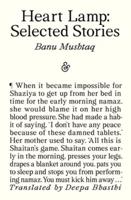Publisher's Synopsis
This historic book may have numerous typos and missing text. Purchasers can usually download a free scanned copy of the original book (without typos) from the publisher. Not indexed. Not illustrated. 1906 edition. Excerpt: ...since merely weakening the stimulus does not lead to a slower beat. When the scratch-reflex elicited from a spot of skin is fatigued, the fatigue holds for that spot but does not implicate the reflex as obtained from the surrounding skin.287-800 The reflex is when tired out to stimuli at that spot easily obtainable by stimulation two or more centimeters away (Fig. 63). This is seen with either mechanical or electrical stimuli. When the spot stimulated second is close to the one tired out, the reflex shows some degree of fatigue, but not that degree obtaining for the original spot. This fatigue may be a local fatigue of the nerve-endings in the spot of skin stimulated, to which in experiments making use of electric stimuli some polarization may be added. Yet its local character does not at all necessarily imply its reference to the skin. It may be the expression of a spatial arrangement in the central organ by which reflex-arcs arising in adjacent receptors are partially confluent in their approach toward the final common path, and are the more confluent the closer together lie their points of origin in the receptive field. The resemblance between the distribution of the incidence of this fatigue and that of the spatial summation previously described argues that the seat of the fatigue is intraspinal and central more than peripheral and cutaneous; and that it affects the afferent part of the arc inside the spinal cord, probably at the first synapse. Thus, its incidence at the synapse Ro--Pa and at R/8--P/3 (Fig. 13, B, or 39, B) would explain its restrictions, as far as we know them, in the scratch-reflex. The local fatigue of a spinal reflex seems to be recovered from with remarkable speed, to judge by observations on the reflexes of the...
























